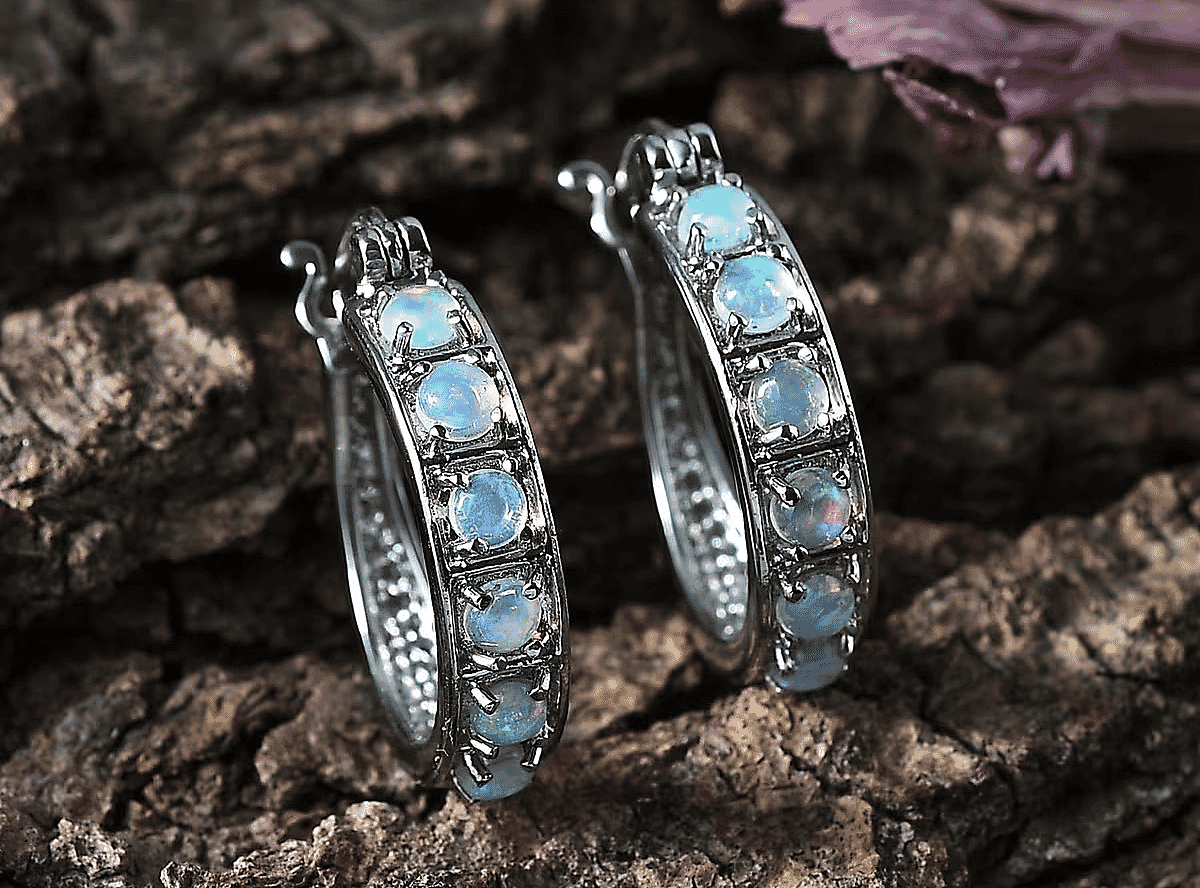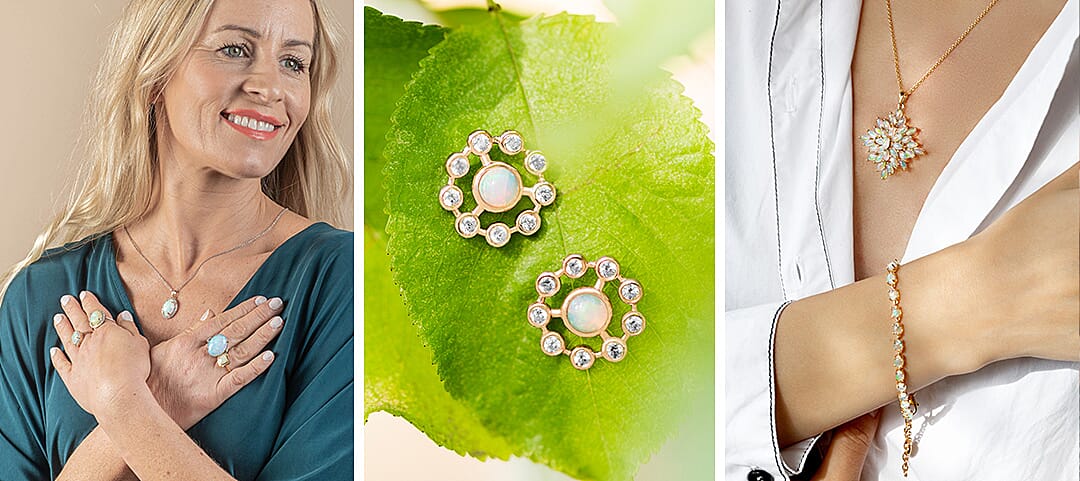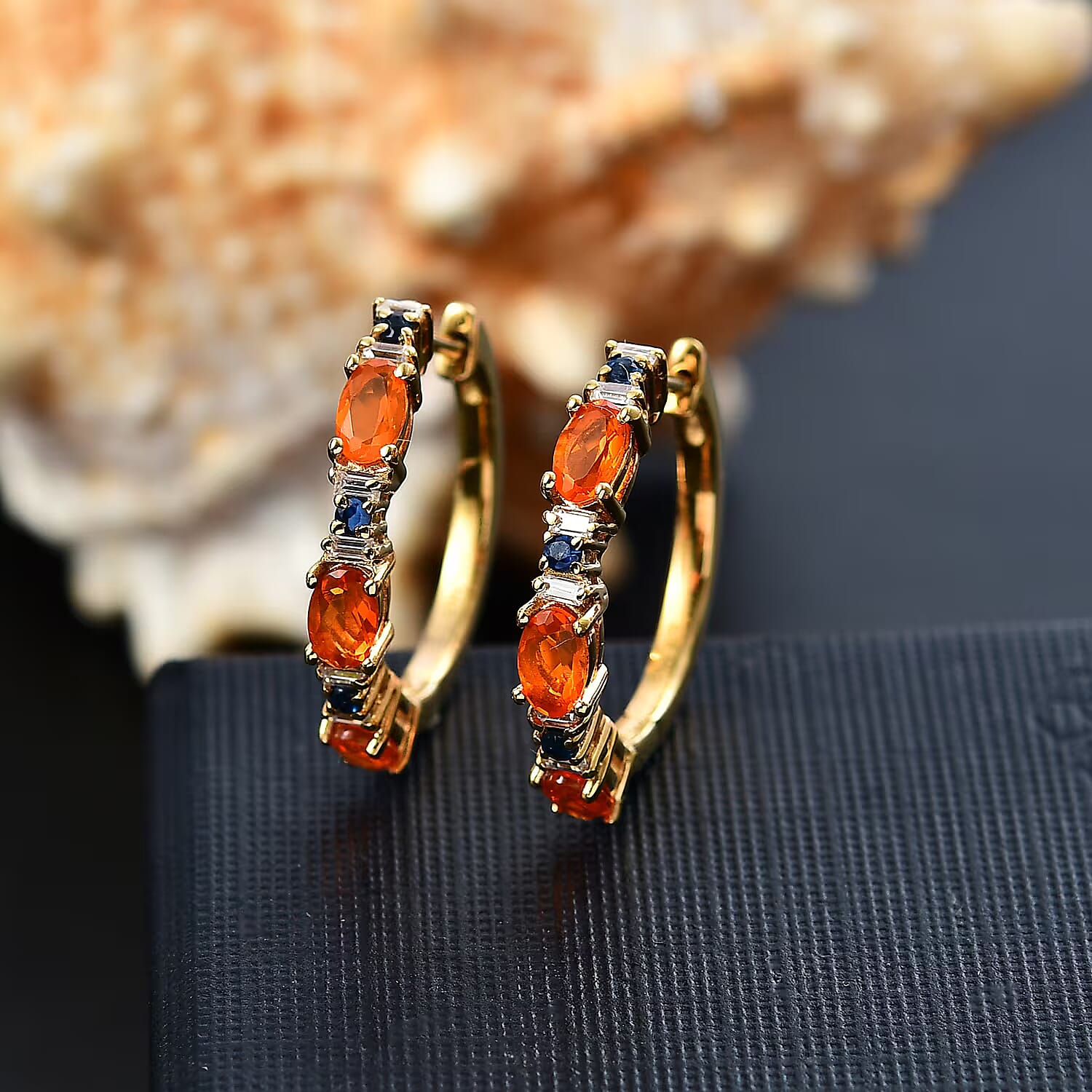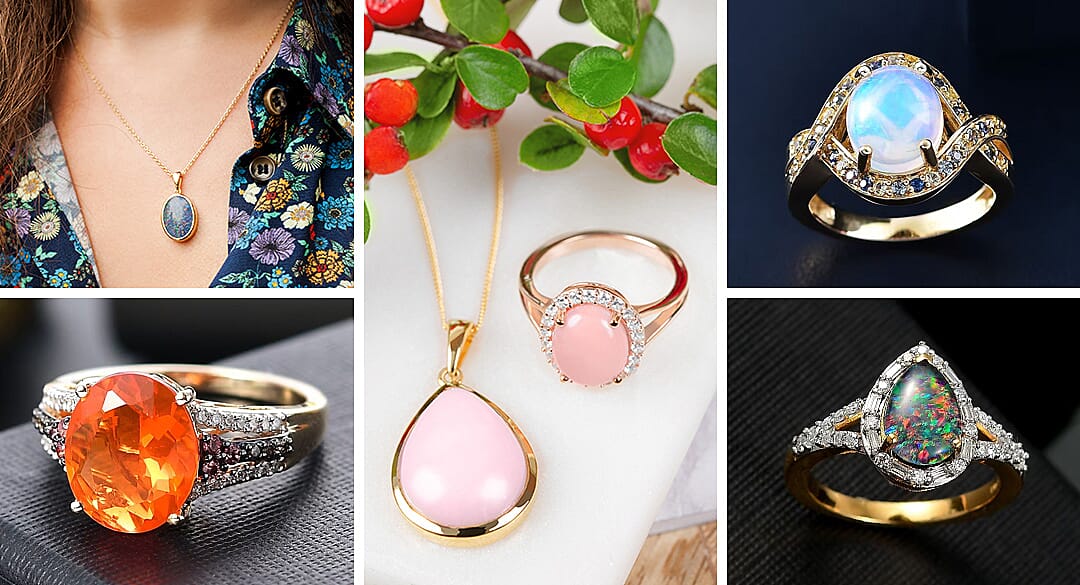
Opal Gemstone
Opals are admired around the world for their mystical play of color, enchanting patterns, and captivating charm. Known as the “queen of gemstones,” opals shimmer with vibrant hues that shift with the light—ranging from fiery reds to ocean blues. Whether showcasing a soft pastel glow or a bold kaleidoscope effect, each opal reflects individuality and magic.
TABLE OF CONTENTS
1. Why Are Opal So Special?
2. Determining Opal’s Value
3. Opal Treatment
4. Where Does Opal Come From?
5. Caring for Opal
6. Who Can Wear Opal?
7. How Does Opal Compare To Other Stones?
8. Opal Facts
9. Varieties Of Opal
10. What Does Opal Mean?
11. Opal FAQ’s
IMPORTANCE
Why Are Opal So Special?
Opals are among the most captivating gemstones, cherished not just for their vivid play of colors but also for their diverse varieties. From the fiery flashes of black opals to the serene simplicity of white opals and the vivid transparency of water opals, each type brings its own unique beauty.
These gemstones are formed from silica and water, capturing light and creating an array of colors through diffraction. Opals can also appear in a single color, offering a spectrum from subtle hues to vibrant tones, making each piece distinct.
VALUE
Determining Opal’s Value
The value of a sapphire is determined by several factors, often referred to as the "Four Cs": color, cut, clarity, and carat. Additionally, the origin and treatment of the sapphire can significantly influence its value.
COLOR
The color of opals greatly impacts their appeal and value, with the vivid play-of-color being their most striking feature. Black opals, featuring dark backgrounds, highlight bright colors and are the most valuable, while white opals have a lighter base, and boulder opals showcase earthy tones. Opals are graded by color, pattern, brightness, and body tone, using scales like brightness (B1 to B7) and body tone (N1 to N9) to standardize their evaluation.
CLARITY
Clarity is a key determinant of an opal's beauty and value, especially in single-color opals where uniformity and transparency are more noticeable. Inclusions can mar the appearance and lessen the stone's value. For opals that display a play-of-color, some inclusions are permissible as long as they do not impede the overall visual effect of the gem.
CUT
The cut of an opal is a critical factor that enhances its inherent qualities. Expert cutting can expose the best color play and patterns within the stone, making each opal a unique artwork. Unlike many other gemstones, opals are not often bound by the constraints of standardized cutting styles, allowing more freedom to accentuate their best features through custom cuts.
CARAT WEIGHT
Carat weight significantly affects the valuation of opals, with larger stones generally being more valuable. This is due to the rarity of large opals that also exhibit outstanding color and clarity. In the world of opals, size does matter, as larger stones not only show color more impressively but also are rarer and thus more prized.
TREATMENT
Opal Treatment
To enhance their appearance, most opal undergo some form of treatment. Common treatments include:
Oiling
Oiling improves the transparency of the opal by filling in surface cracks and enhancing color. Oil-treated opals require special care, as the oil can diminish over time and affect the gemstone’s appearance.
Dyeing
Dyeing enhances or alters the color of the opal, making it more vibrant or changing its hue.
Stabilization
Stabilization improves the durability of opals by treating them with stabilizing agents that strengthen the stone. Stabilized opals are more resistant to damage but may require different care than untreated stones.
ORIGIN
Where Does Opal Come From?
While Australia is known for producing the majority of the world’s opals, particularly prized black and boulder opals, other countries contribute beautiful varieties as well. Ethiopia has gained fame for its stunning Welo opals, which often display brilliant play-of-colors, while Mexico is known for producing vivid fire opals with rich, saturated colors.
In America, Oregon is celebrated for its unique peach opals. Meanwhile, Peru offers a delicate variety known as pink opal, which lacks the play of color but is valued for its pastel shades and smooth texture, adding to the rich tapestry of opal varieties found around the world.
Is Opal a Birthstone?
According to the modern U.S. birthstone list, opal is the birthstone for October. Its various varieties, such as white opal, black opal, and fire opal, serve as relevant alternatives for October's birthstone.
Storage
Caring for Opal
Opals are relatively soft compared to other gemstones, making them delicate and requiring special care to maintain their beauty. To keep your opal jewelry looking its best, avoid exposing it to harsh chemicals such as perfumes, cleaning agents, and chlorinated water, as these can damage the stone or its treatments.
When it comes to cleaning, use a soft, damp cloth and steer clear of ultrasonic or steam cleaners, which can harm the opal. Instead, gently wipe the opal with a mild, non-abrasive soap and water if necessary. Proper storage is also crucial; keep your opal jewelry separate from other pieces to prevent scratching, ideally in a soft pouch or a lined jewelry box.
IDEAL CHOICE
Who Can Wear Opal?
Opal is a versatile gemstone that can be worn by anyone who appreciates its unique beauty and symbolism. Fashion enthusiasts will find opal’s play-of-color captivating, making it an excellent choice for distinctive and eye-catching jewelry pieces. It is especially meaningful for those born in October, as opal is their birthstone, symbolizing hope, purity, and truth.

Difference
How Does Opal Compare To Other Stones?
Fire opals, known for their vivid orange to red hues, draw a visual parallel to spessartine garnets, which also exhibit bright orange colors. Both stones radiate warmth and vitality, but fire opals may display a play-of-color and typically have a softer, more translucent appearance compared to the more consistent, deep orange transparency of spessartine garnets.
Similarly, the ethereal beauty of white opals can be compared to moonstones. Both possess an intriguing play of light - opals with their colorful diffractive brilliance, and moonstones with a mysterious, billowy light effect known as adularescence.
Opal Facts
MOHS HARDNESS
5.5-6
COLOR
Iridescent as well as solid colors such as orange, white, and pink.
TREATMENT
May undergo additional treatment to improve color and clarity.
ANNIVERSARY
18th and 34th

VARIETIES
Opal Varieties & Forms
Ethiopian Welo Opal: Known for its brilliant play-of-color with a spectrum ranging from greens and reds to blues, primarily found in Ethiopia's Welo region.
Mexican Fire Opal: These display vivid orange to red colors, sometimes showing play-of-color, valued for their intense, fiery hues and often translucent appearance.
Australian Boulder Opal: Characterized by vibrant colors against a dark ironstone background, these opals offer a striking contrast unique to Australia.
Mosaic Opal: Composed of smaller opal pieces bonded to a backing and covered with a protective layer, showcasing a colorful patchwork.
Black Ridge Opal: Valued for their dark backgrounds and rich play-of-color, these opals provide a dramatic visual impact.
Mexican Hyalite Opal: A colorless, transparent opal that fluoresces green under UV light, offering an ethereal glow.
Peruvian Pink Opal: Mined in Peru’s Andes, known for its soft pink hues and opaque texture without play-of-color.
Oregon Peach Opal: Found in Oregon, USA, features a warm peach to orange color spectrum with a translucent to opaque appearance.
Green Opal: Green opal, a hydrated amorphous form of silica that often includes nickel, displays a distinctive pale green hue enhanced by a spotted surface.
Natural vs. Lab-Created Opals
Natural opals are unique, formed over millions of years with individual color patterns and inclusions. In contrast, lab-created opals, developed in controlled environments, offer consistency in color and pattern, providing an affordable alternative with similar aesthetic qualities.
Forms of Opals: Solid, Doublets, Triplets
Solid Opals: These are completely natural, displaying a full spectrum of colors with no additional materials, making them highly valuable.
Opal Doublets: Constructed by adhering a real opal slice to a dark backing, enhancing the stone's color at a lower cost.
Opal Triplets: Built with three layers, including a thin opal slice between a dark backing and a clear top layer, designed to enhance durability and color visibility.

SELECTION
What Does Opal Mean?
Opal is steeped in captivating lore and mythology. Arabic legends describe opal as a celestial gem that descends from the heavens in flashes of lightning, embodying the storm’s raw energy within its vibrant colors. In ancient Greece, opals were revered for their supposed ability to bestow prophetic powers and offer protection from illness, enhancing their mystical reputation. Throughout history, Europeans have viewed opal as a powerful symbol of hope, purity, and truth, further enriching its allure as a gemstone imbued with deep, symbolic meaning.
Disclaimer: The above information is presented for informational purposes only and should not replace the advice of a trained medical professional.
Opal FAQ’s
Q. What are the different types of opals?
A. Opals are categorized mainly into three types: precious opal, which shows play-of-color; common opal, which is often opaque and does not display play-of-color; and fire opal, which is transparent to translucent and ranges in color from yellow to rich orange and red.
Q. How should opals be cared for?
A. Opals need careful handling as they are relatively soft and can be easily scratched, cracked, or chipped. They should be cleaned gently with mild detergent in warm water and a soft brush.
Q. What makes opals show different colors?
A. The play-of-color in opals is caused by the diffraction of light passing through tiny silica spheres within the opal structure. The arrangement and size of these spheres create a spectrum of colors depending on the angle of light entry.
Q. Where are opals commonly found?
A. Australia is the most famous source, producing about 95% of the world's precious opal, including the renowned black opal. Other notable sources include Ethiopia, Mexico (known for fire opal), and Brazil.
Q. What is the symbolic meaning of opals?
A. Opals are often considered a symbol of hope, purity, and truth. Additionally, opal is the birthstone for the month of October, making it especially significant for those born in that month.